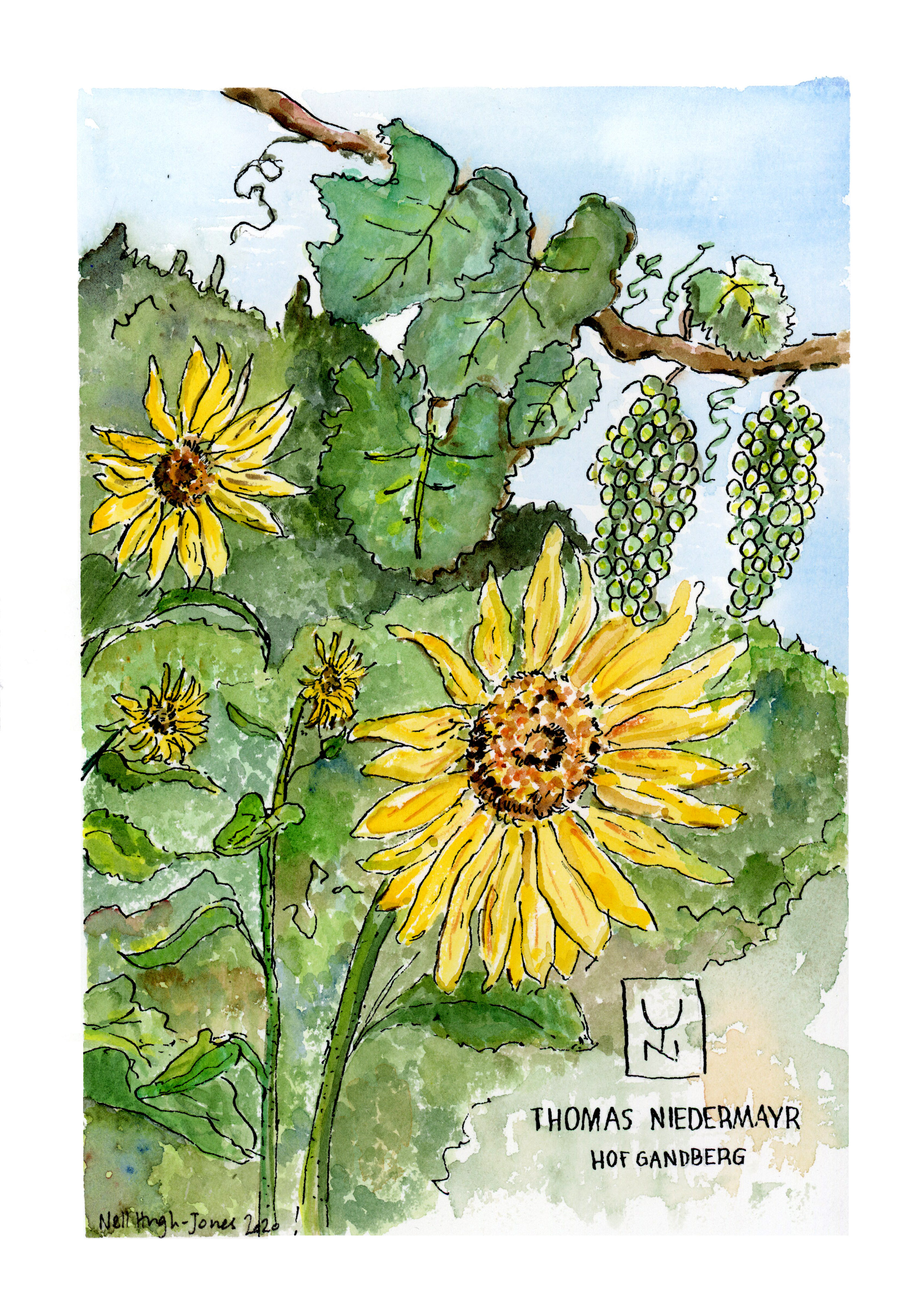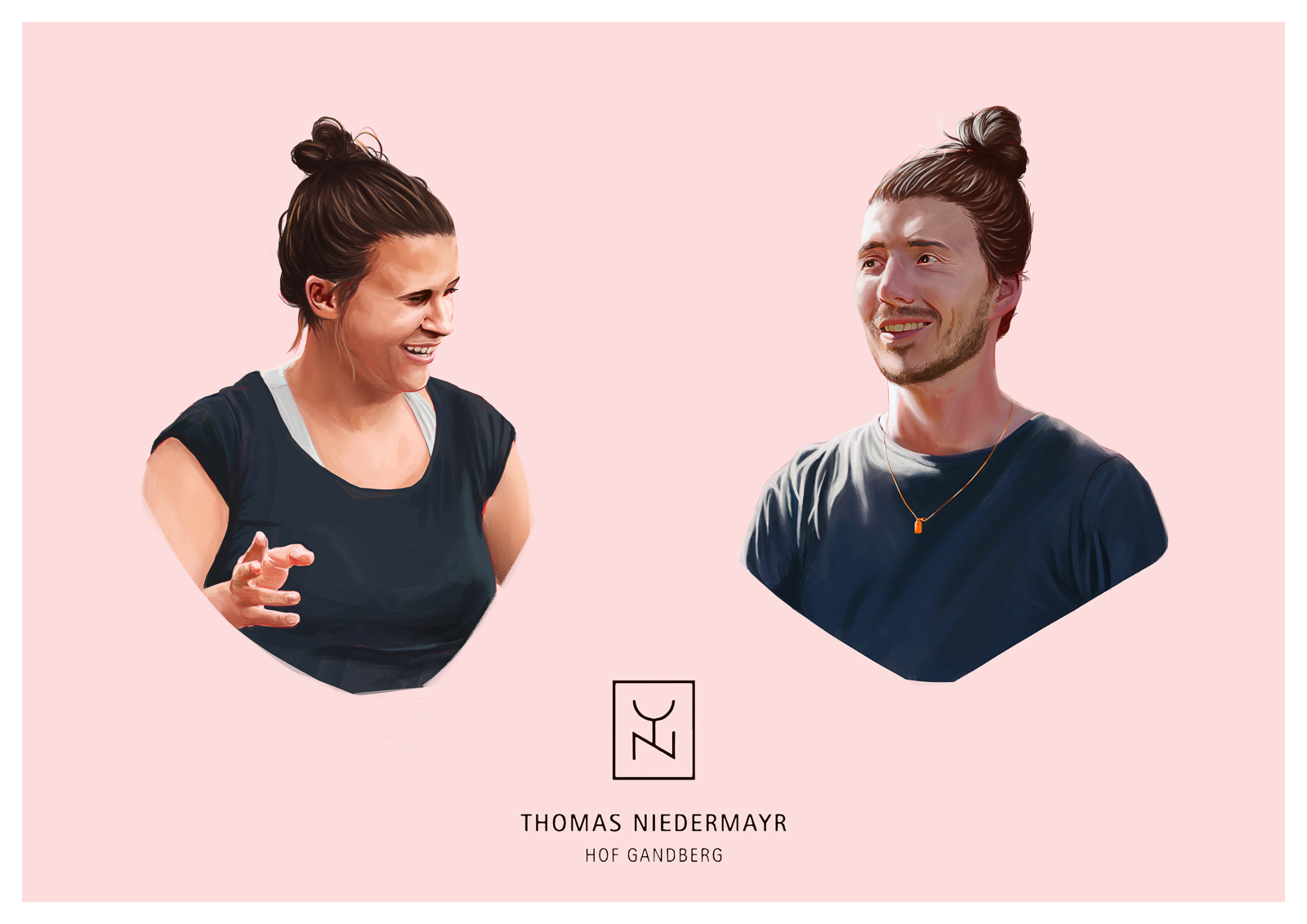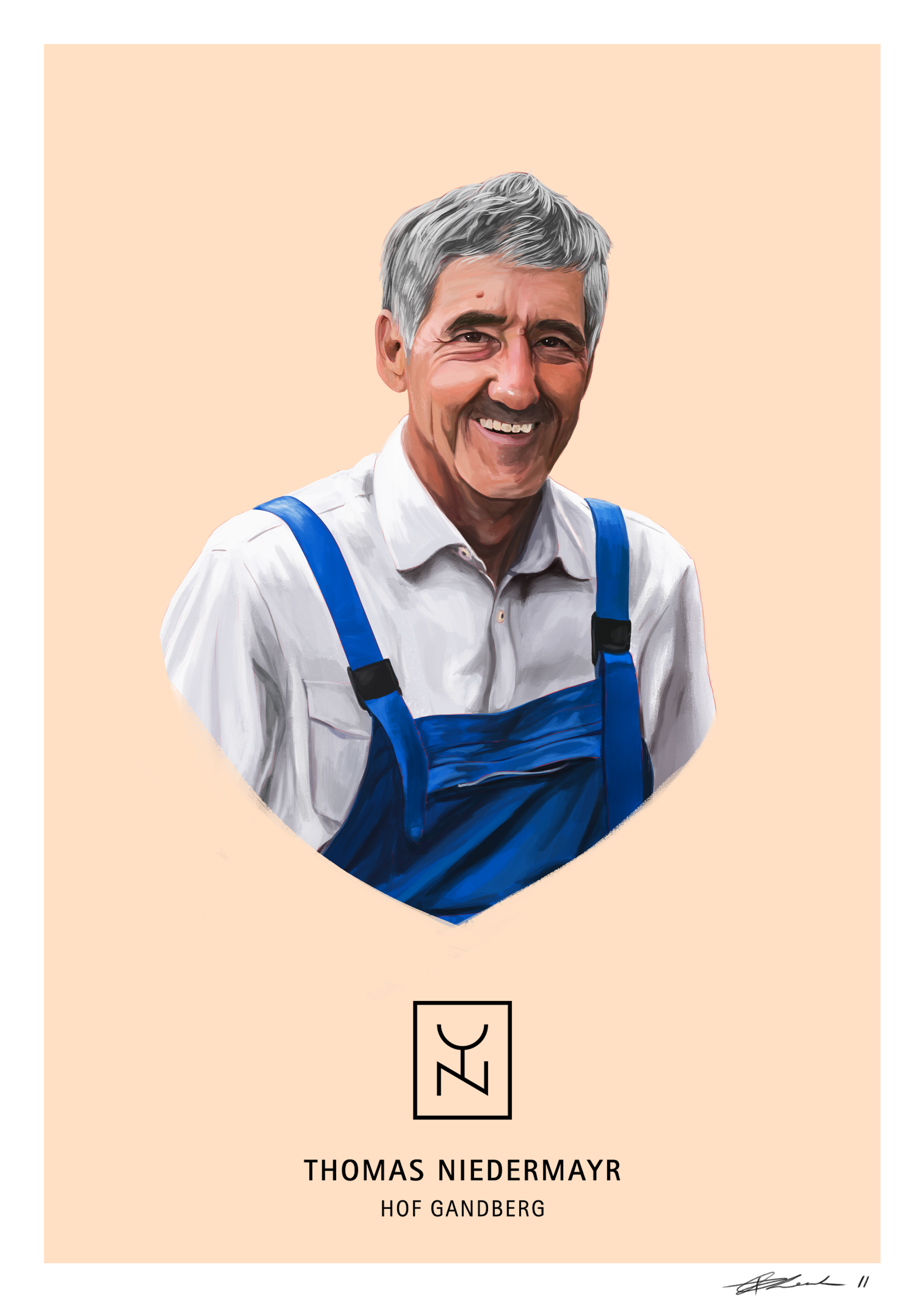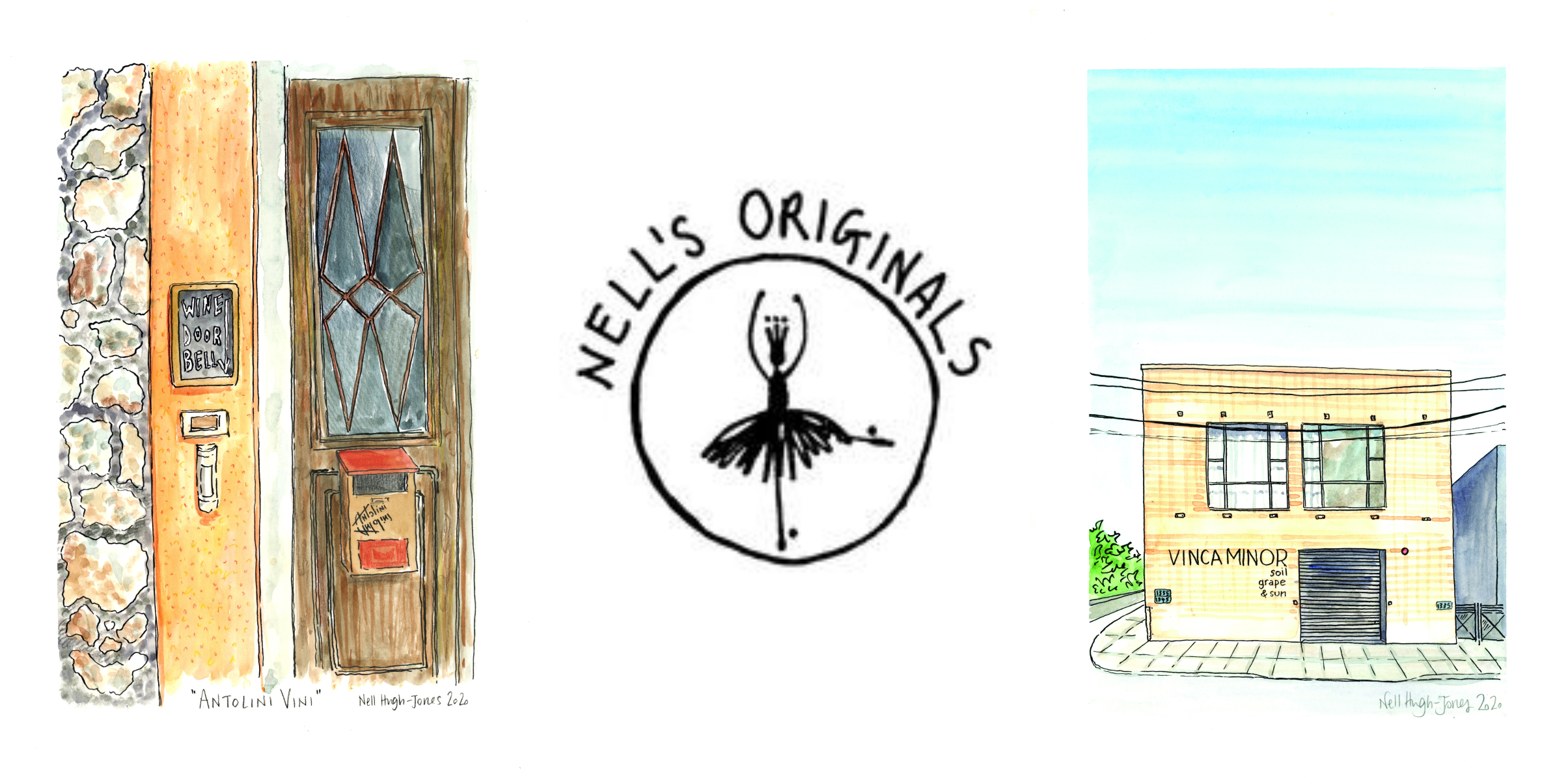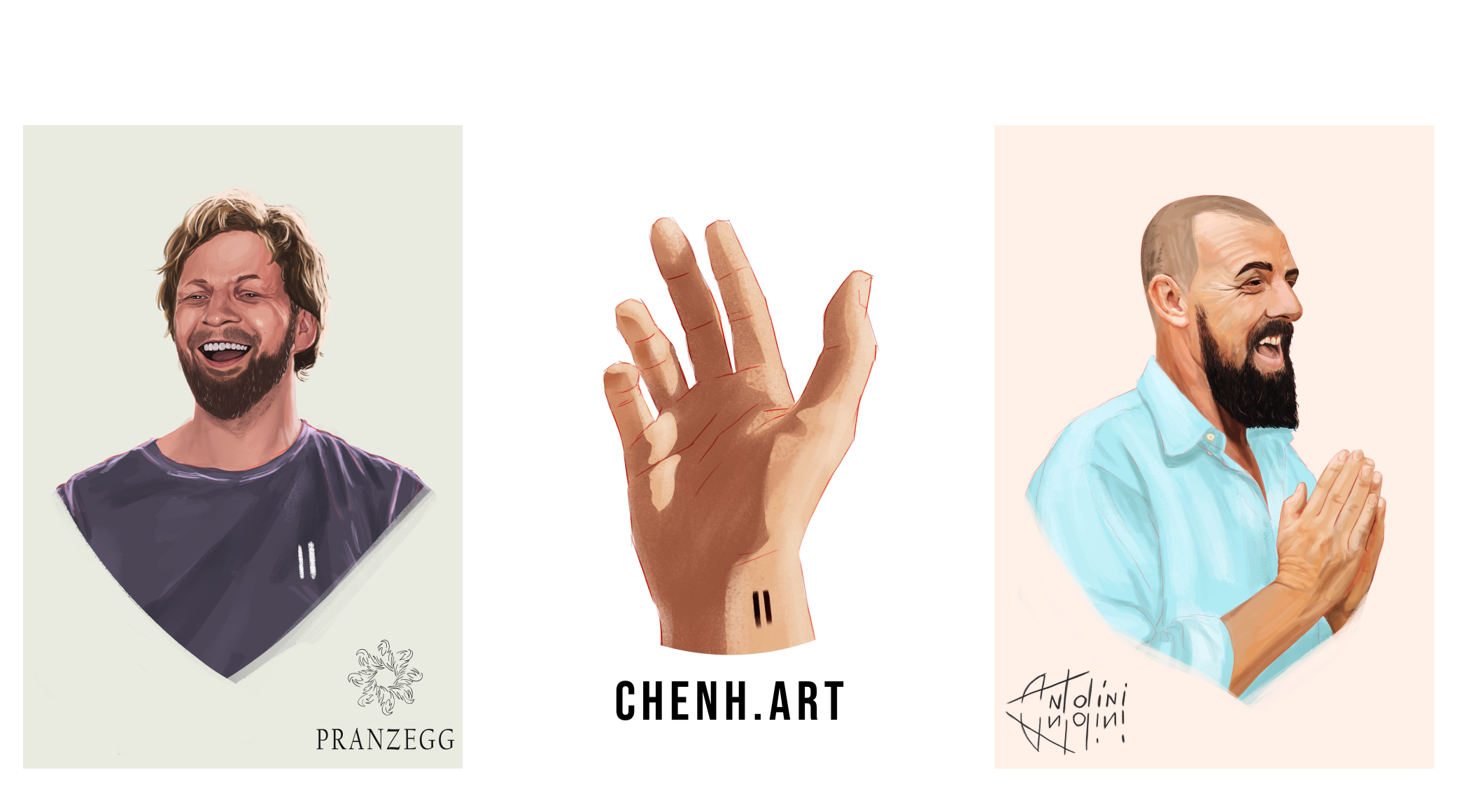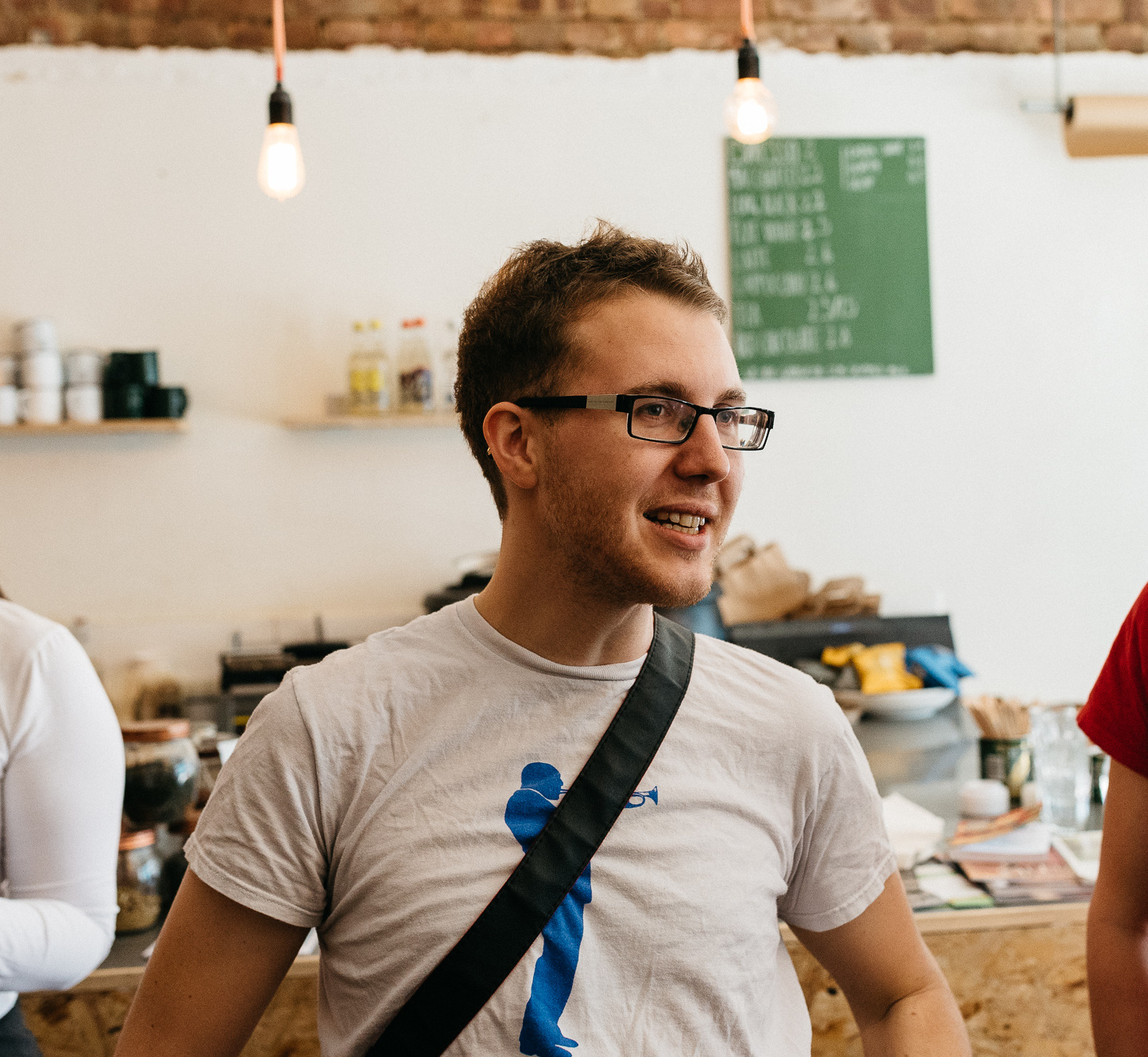For interview number three of this new series, we find ourselves once again in the Südtirol (or Alto Adige) region of Italy, close to the Austrian border. The subject of today’s article, Thomas Niedermayr, is a young winemaker following in his father Rudi’s footsteps. Rudi was way ahead of his time – he sought to implement organic farming and wine-making over 30 years ago, before joining the Bioland association in 1991. From 1994, he started working with PIWI vines (more on that later), which are now a signature of this family winery – he subsequently started his own crossings in 2005. Thomas joined in the fun in 2010, and a couple of years later he took over management of the business.
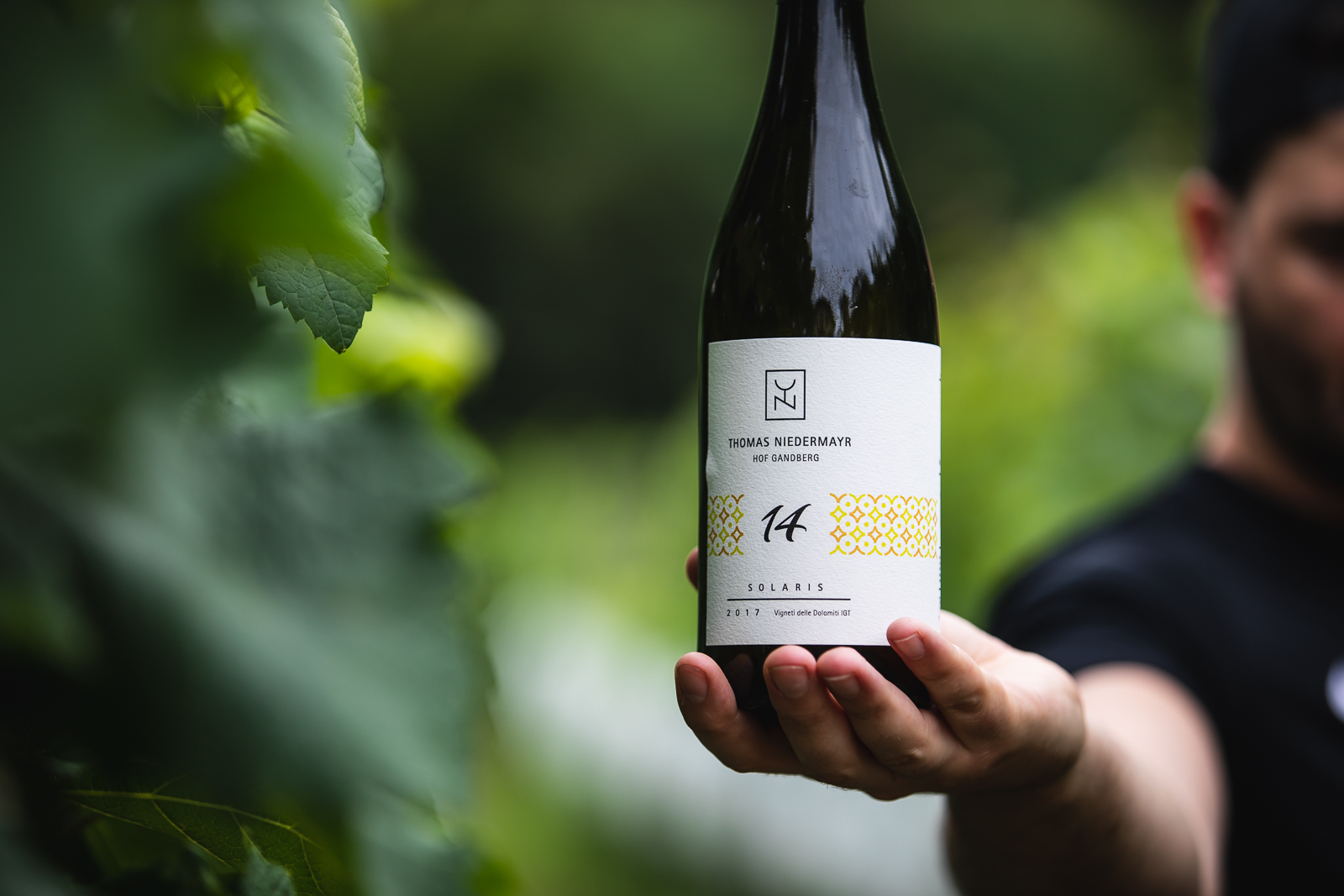
We knew we were in for something special as we wound our way up gorgeous Südtirolean roads, flanked by forests and vineyards, with the Dolomite mountain range in our rear view mirrors. Hof Gandberg, the Niedermayr family farm estate, is a little slice of heaven. We were greeted by Christine Wolfram, assistant winemaker, who was the most informative host as she took us on an in-depth tour of the rioutously colourful grounds. We stroked fluffy baby chicks, picked fresh hanging fruit, smelled the massive wooden doors of the new cellar, and sampled their exciting living wines both in barrel and bottle.
Colourful surroundings at Hof Gandberg | Watercolour by Nell’s Originals
Order this print online here!
———————
A year later, in rather different circumstances, we caught up again with Thomas & Christine to discuss their unique way of life. If you been holding out for mentions of runner ducks, porphyry and fungus-resistant super vines, this is the interview for you.
- a short film produced by Kiwitree Films for Bioland and updated with English subtitles for this interview
Hello Thomas & Christine! Let’s get straight into it. Hof Gandberg is an idyllic place – I wish I had taken some video myself! Can you set the scene for everyone?
TN: You have to know about this place, otherwise you will never find it! Google Maps will try to guide you, but it is still a challenge – through narrow roads, up the hill, turn left, over a dirt road, then, behind a small curve to the right: there it is – the old family house; the shed; chickens, ducks and Lexi the cat crossing your path. In spring or summer, there is colour everywhere. You’ll find Mama in the garden, preparing all of the goods we are enjoying every day; and Papa looking out the workshop, building the next thing that helps us work smarter. Where’s Thomas? In the vineyards probably!
A little down the hill, to the right, is the cellar, built into the hill, part of nature. Vineyards on all sides, eventually becoming the woods. Look up, and you’ll see mountains. Gandberg is the “house mountain” above, and further away you’ll see the unique colours and shapes of the Dolomites. We are stunned every day.
"One thing is fundamental: everything takes its time." Thomas Niedermayr
Before we made it into the vineyards, we were introduced to baby chicks, runner ducks, rabbits and more. Who are your favourite characters? And how do they contribute to the estate?
CW: I am in love with every creature I get to meet on the farm. But my favourite is Lexi, our cat. She’s about 15 years old and she is very vocal when she wants something! I love to cuddle in bed with her!
TN: It is a symbiosis between us humans and the animals. We care for them, and nurture them, but we also take from them. The eggs from the chickens, the flesh of the rabbits and male chickens. The runner ducks collect snails and make everyone smile as they waddle around the farm. Our animals are part of the farm’s cycle.
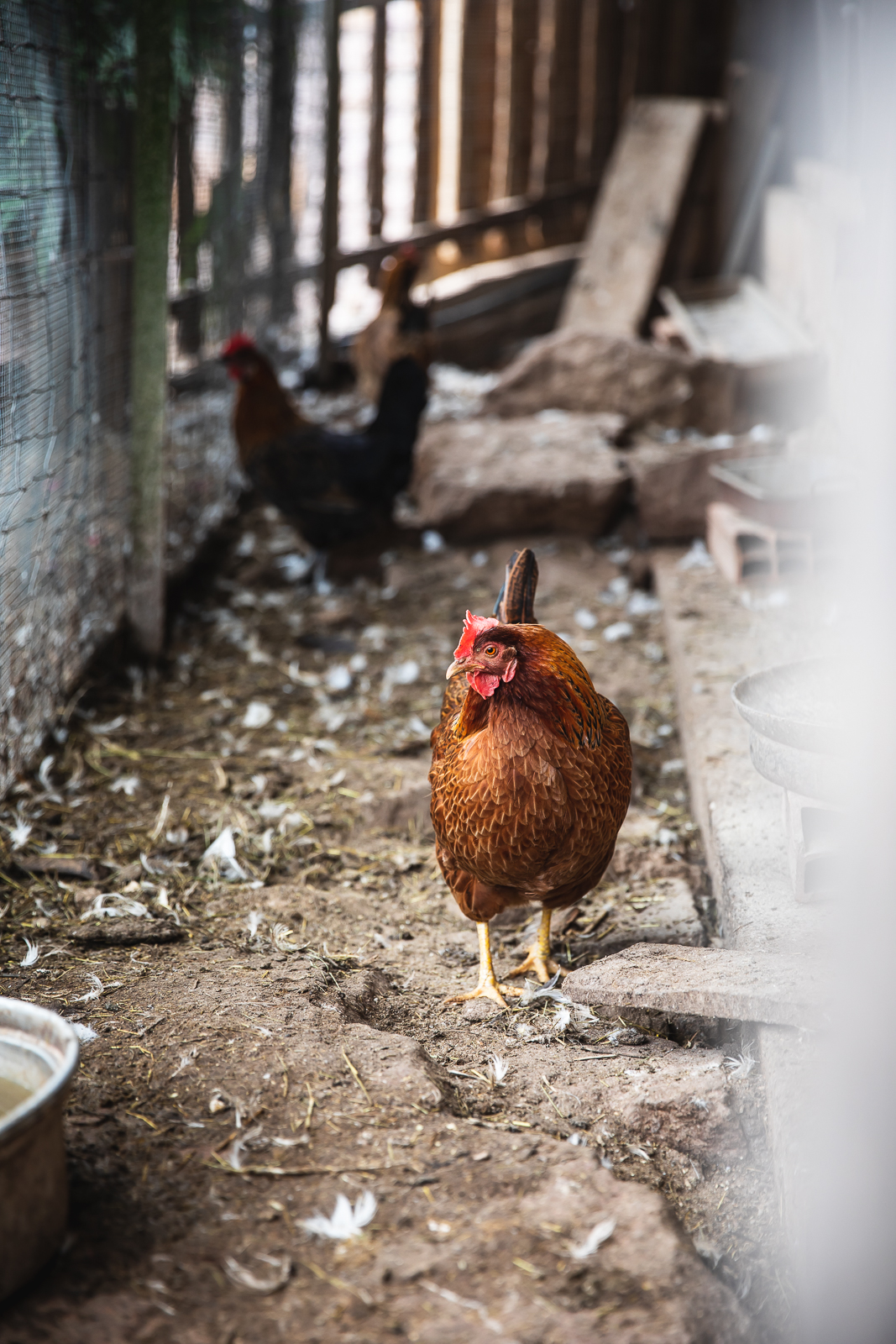
Following in your father Rudolf’s footsteps, you aim to create a biological balance and natural cycle on the estate. How do you go about this, and how does it affect your winemaking?
TN: We support the biodiversity through insect hotels, hedges and sowings which contribute to soil fertility. No external fertilizers or chemic-synthetic pesticides are going into our vineyards and we can almost cut the organic plant protection we have to use to a level of 0. That’s why we use the right varieties for the ideal location – our fungus resistant grape varieties (PIWIs). We are working in a way that our ancestors used to do and that Rudolf carried further, and of course we go with the time and let new things into our way of working and way of thinking.
So we are able to harvest grapes that contain the nutrients from soil, climate, sunlight and air. The quality of the grapes affects the wine positively in the way that we have a huge amount of wild yeasts on the berries and no pesticides hinder the wine in its development. One thing is fundamental: everything takes its time.
Christine Wolfram & Thomas Niedermayr | Artwork by Damon Chenh | Order this print online here
—————————–
Could you give us a beginner’s guide to the PIWI vines that you cultivate, and some of the unique grapes that go into your wines?
TN: All the well-known and indigenous varieties have a high susceptibility to fungus diseases in wine-growing. PIWIs – fungus resistant varieties – are more tolerant because over 150 years ago, people understood that wild vines have a natural resistance and that can be crossed into the Vitis Vinifera (common grape) varieties. They started to cross and huge family trees evolved with many popular grape varieties in them – like Riesling, Grenache, Pinot Grigio. The children of them are now new varieties who are Vitis Vinifera again, the only difference is that they have the resistance given by their ancestors.
The crossings are happening in the vineyards, during the blossom, a process that also happens naturally every day. We are also developing new varieties and doing our own crossings at our winery so if someone would like to see how it works we are happy to welcome you! We have been working with the PIWI varieties for 25 years and over that time we have experimented a lot in our vineyards. Our main varieties are now Souvignier Gris, Solaris and Bronner which were all crossed in Freiburg, Germany, one of the renowned institutes regarding PIWIs. There are a lot of PIWIs and a lot do not even have a name yet!
Have you or your family created and/or named any yourself yet?
TN: There is a variety called ‘Heidi’, named after my little daughter who is 2.5 years old. There was a new variety in 2018 which grapes ripened really early and these were the first grapes she got to eat. So my father named them after her. Besides that, all of the varieties we have crossed get numbers instead of names at first, since it is just such a long process and often varieties get thrown out. Also, all varieties needed to be approved by the state to be legally grown, that takes another few years.
[Matt : For more info on PIWIs or “Pilzwiderstandsfähige” (!), read this fascinating article on Vine Pair – “Why The Wines Of The Future Will Be Made From Hybrid Grapes”]
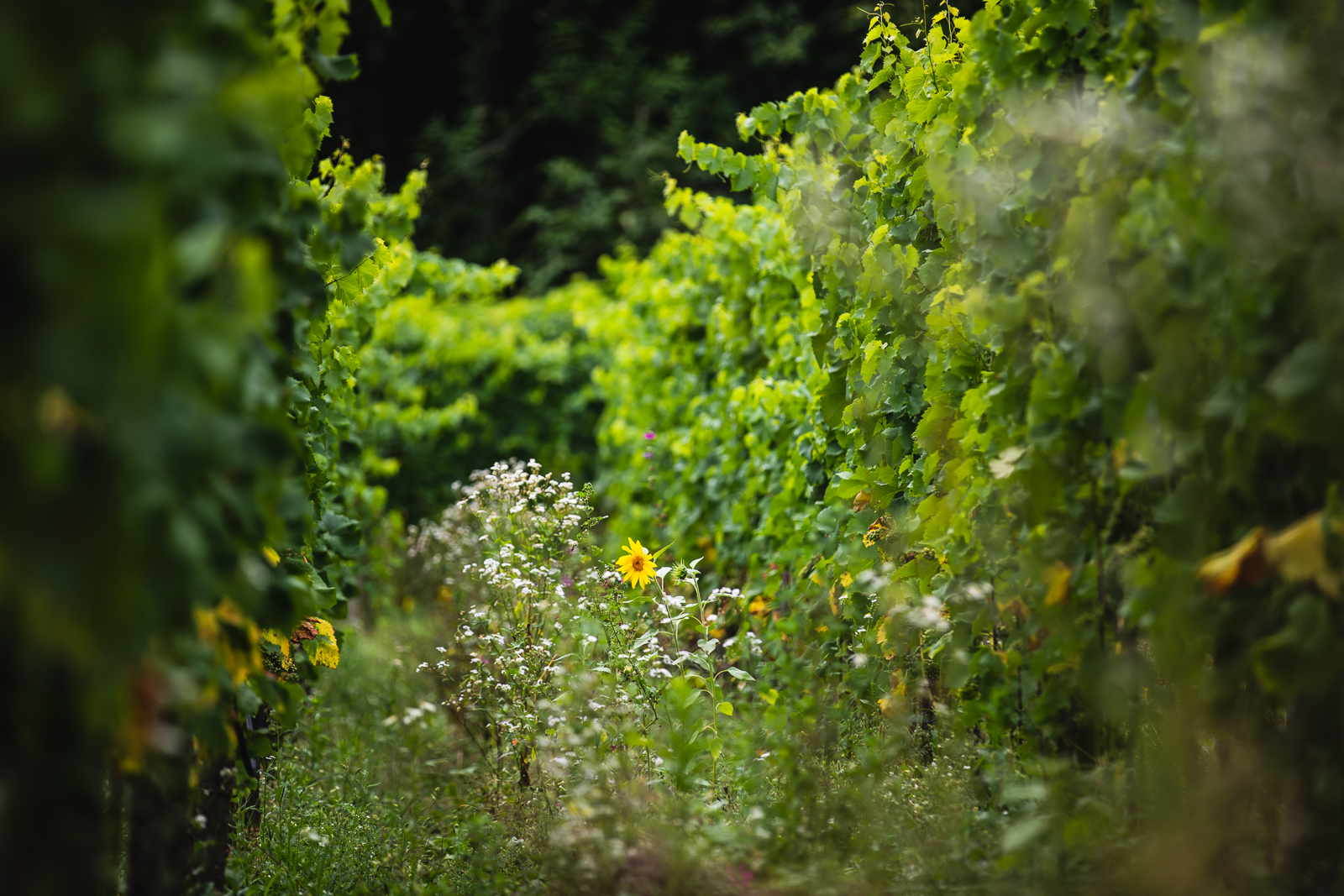
OK – whilst we’re getting into the details of farming, for those of us who aren’t fluent in soil and rock, could you go into a little more detail about the earth here?
TN: Our lime-dolomite rock was formed by calcareous (limey / chalky) marine deposits and coral reefs that solidified over 200 million years ago. Clay is formed by weathering of different rocks, which are transported and mixed by rivers. Our clay was formed over 250 million years ago in the mountains surrounding us and was then washed down to us by mountain streams. It is very red as it contains a lot of iron.
Our calcareous and loamy (clay, silt and sand) soils have great depth, so our vines can root deeply. You are able to find water and nutrients in deeper layers of the soil and therefore we have great conditions for the nutritional supply of our plants. Our soil is red-brownish and has a high amount of Dolomite rock, all of it is intensively rooted, with lots of earthworm channels. If you take a piece of our soil after it rains you almost want to bite into it. It’s soil that breathes and is lively, just like our wines which reflect this conditions.
"If you take a piece of our soil after it rains, you almost want to bite into it." Thomas Niedermayr
I’ll leave eating earthworms to you! How about the height above sea level and the position of the vines – what unique challenges does this pose for you?
TN: The vineyards start at 300 meters and go up to 700 meters above sea level – all exposed to the south east. With this height range our grape varieties can be planted at the ideal location also regarding the harvest dates which you have to consider when planting. Despite the climate change we are able achieve wines with a good acidity and crispness. The challenge is to find the right variety for the right location – that takes practise and experience. With our varieties it is a lot of trial and error because we are amongst the pioneers in growing PIWIs.
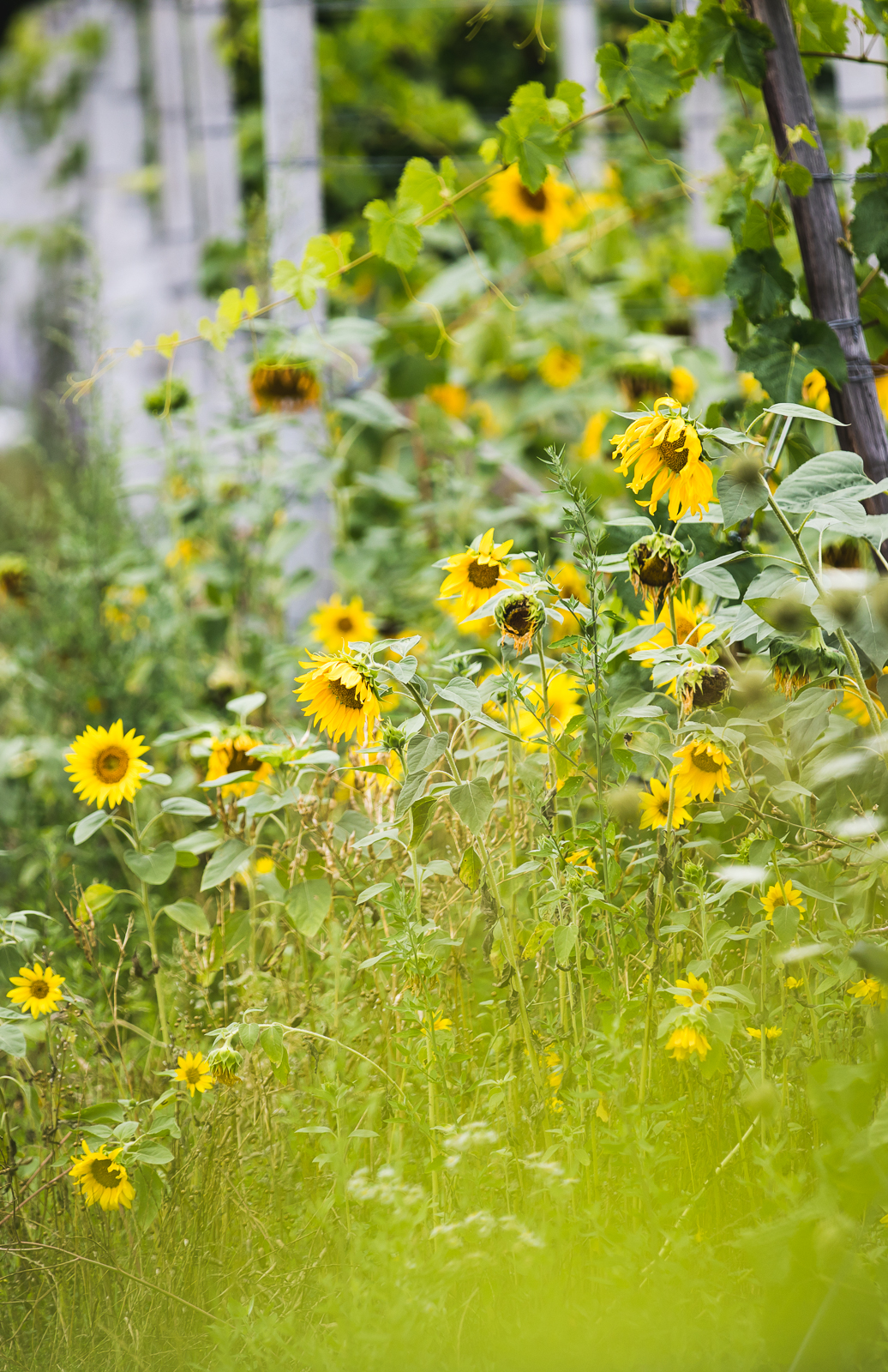
Since you grow so much at Hof Gandberg, have you considered experimenting with fermenting any other fruit? Perhaps making natural cider?
TN: We are producing apple cider vinegar! We certainly love to experiment but have very little experience with fermenting other fruits and making wine is complex and time-filling enough so far. There is always something new to discover.
OK – let’s talk harvest. It looks like seriously hard work, but also a magical part of the process – is it your favourite time of year? (P.S. Can we come next year?)
TN: We’d love to have you! It is always a huge pleasure to host people on the farm and work with them, show them how we work and why we do so. It is a special time of the year, but always a challenging one too. It is hard work until you are able to harvest healthy grapes – you need good luck with the weather and you have to react to new challenges every year. It is always exciting when the first grapes enter the cellar and when the first must starts to bubble. It is indeed our favourite time!
We’ve talked about the vineyards, so let’s now head to the beautiful, state-of-the-art cellar. Could you tell us more about it?
TN: The cellar was built in 2017 and we tried to make it minimalist and functional. The fundamental element is ferro-concrete, and everything else is massive wood, lumbered from our own woods. It was important to us to create a natural cellar climate without synthetic insulation, that is why it is entirely build into the ground/hill. From outside, you are only able to see the entrance – above it vines are rooting and you can see a variety of greenery. The grape processing is taking place outside; the grapes slide down a shaft directly into the press or into a tank or barrel. In the next cellar-room there are our tanks. Then there is the wooden barrel cellar with the unique porphyry ground (Matt : Let me Google that for you). The deepest point of the cellar, where the climate is the most constant, hosts our wine bottles.
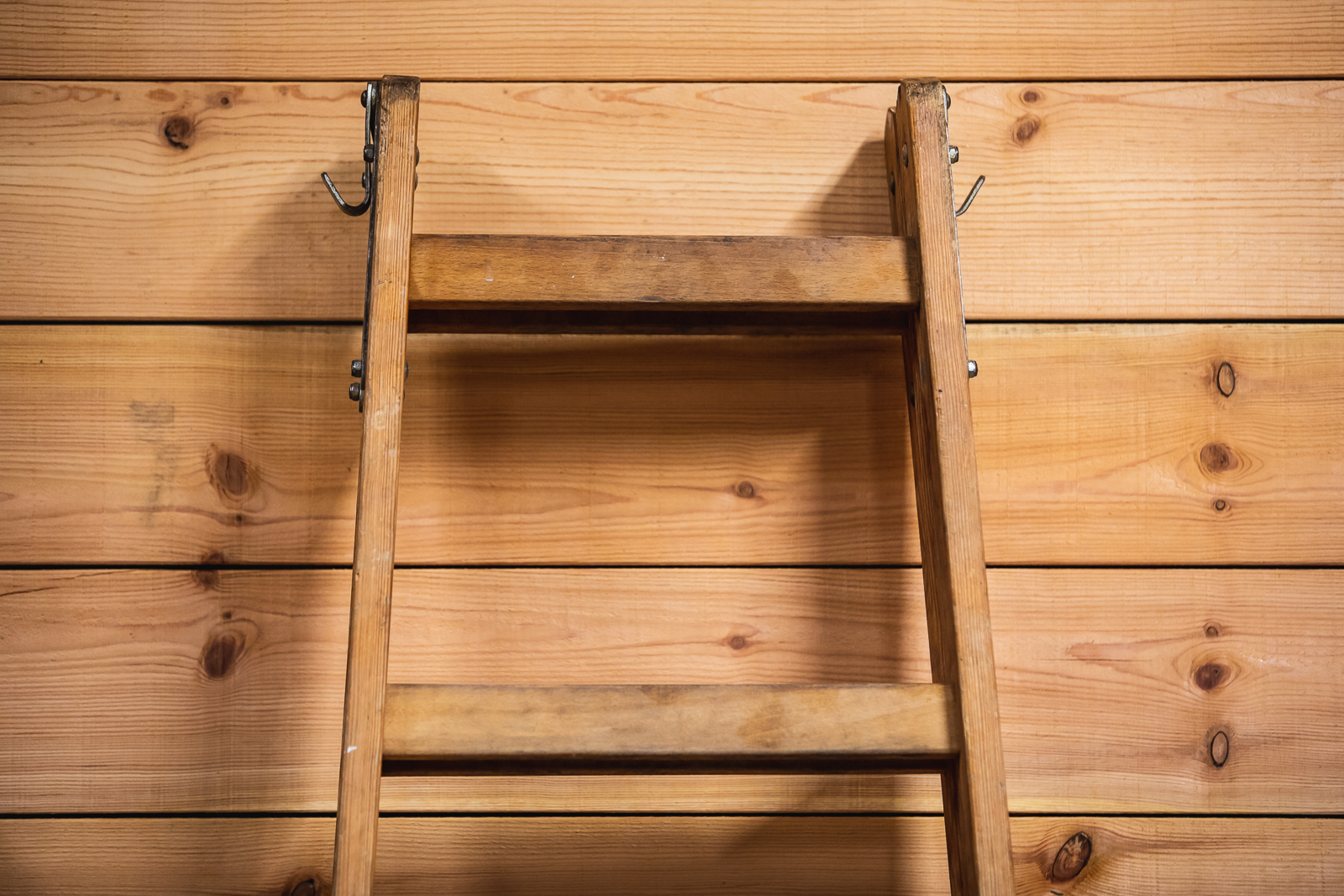
I have distinct memories of smelling the wooden doors as we walked around – Christine, did you make us do that?
CW: Probably, haha! I love the natural feeling inside the cellar, it is a great place to be having to work at. The cozy feeling when so much wood is surrounding you makes this cellar special to me. Every time we bring a new part that we build in and you can smell the wooden flavours it is a pleasure. It makes you want to be in there.
How often do you check in on the wine?
TN: During and after harvest, every day. When the wines start to settle the intervals get wider and when the wines are going into hibernation we just check in occasionally. Where there is the greatest development and where the crazy micro-organisms go wild it is important to taste often and to understand in which direction the wines are going.
What ways can you naturally intervene if a wine seems to going in the “wrong” direction? Or do you always leave it be and accept the result?
TN: When working with high quality, organic and hand selected grapes you can really minimize the potential of wines going wrong. We are selecting out every berry that could possibly harm the wine. So when it happens, with our philosophy of making wine we decide to intervene as little as possible – there would be a lot more possibilities in organic winemaking. We use small amounts of sulphur in our wines and that can help regarding some issues.
You can also take a look at the yeast – is it still good or do we have to remove the wine off it? Is it the best decision to leave it in wooden barrels, where there’s the micro-oxidation occurring or would it be better off in a steel tank? It is always a challenge and life-long learning process. Even with a lot of discussion with colleagues and scientists, it still remains difficult to interpret the condition and to accept if it is not what you are looking for at this moment. When the wines are opened after 3,4,5 years, perceived issues can turn out as a plus, so patience and time is important, giving the wine the time it needs.
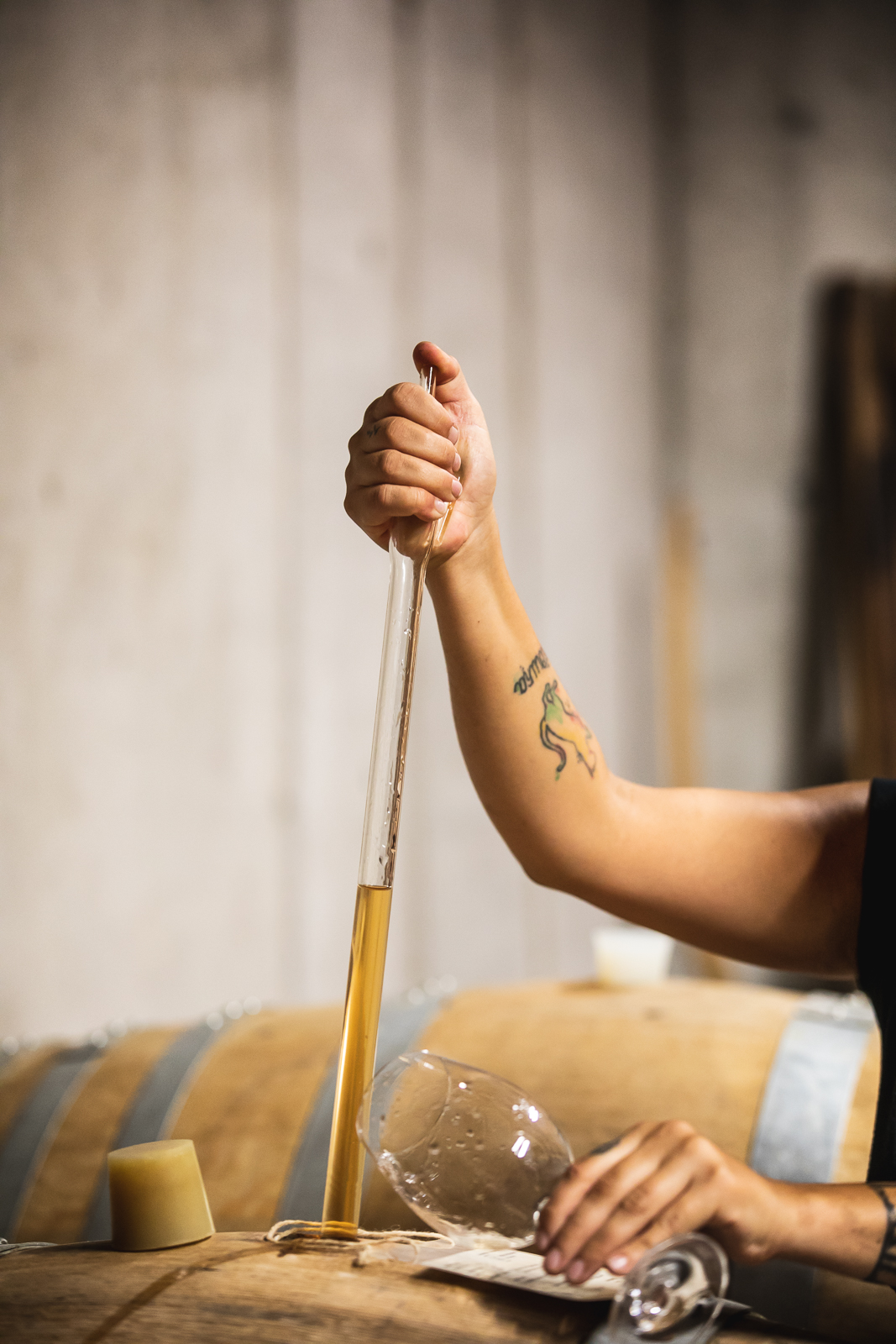
Let’s talk about those wines! What might someone new to your wine look out for and particularly enjoy?
TN: Our wines definitely reflect the year with its individual weather conditions and also the decision that we are making year after year when the grapes get into the cellar. Natural, but still elegant. Cloudy, but still fresh. A mouth full of wine which develops from the moment you smell it to when it goes down the throat and that stays. When you keep an open bottle you will see the liveliness even after a couple of days – the wines change with more and more oxygen as it starts to live again.
I notice that you predominantly produce white wines, with only one red currently in the range. Is there a reason for that, and do you have plans to produce more reds?
TN: Partly it is because we are living in a white-wine-region. However, we have just planted a few red varieties having cleared a vineyard last year. We simply do not have more space and are not drawn particularly to white or red but just plant what we like, and what fits best to specific location and microclimates.
Which Thomas Niedermayr wines are you most proud of?
TN: I am proud of all of them, really! They reflect the intense work that went into them over the years. If I had to pick one, perhaps Abendrot – our skin fermented Souvignier Gris which was first made in 2013 when I took over the winery from my father. It is on the skins for several months, a long development that takes place in big wooden barrels, steel and in the bottle.
CW:I need to say it’s Freistil, our new Pet Nat. A new wine and a process that I was able to initiate with Thomas and accompany as it progressed. It was a work-intensive process from which we will learn a lot. Also, the label is similar to the others but with a twist – I painted it!
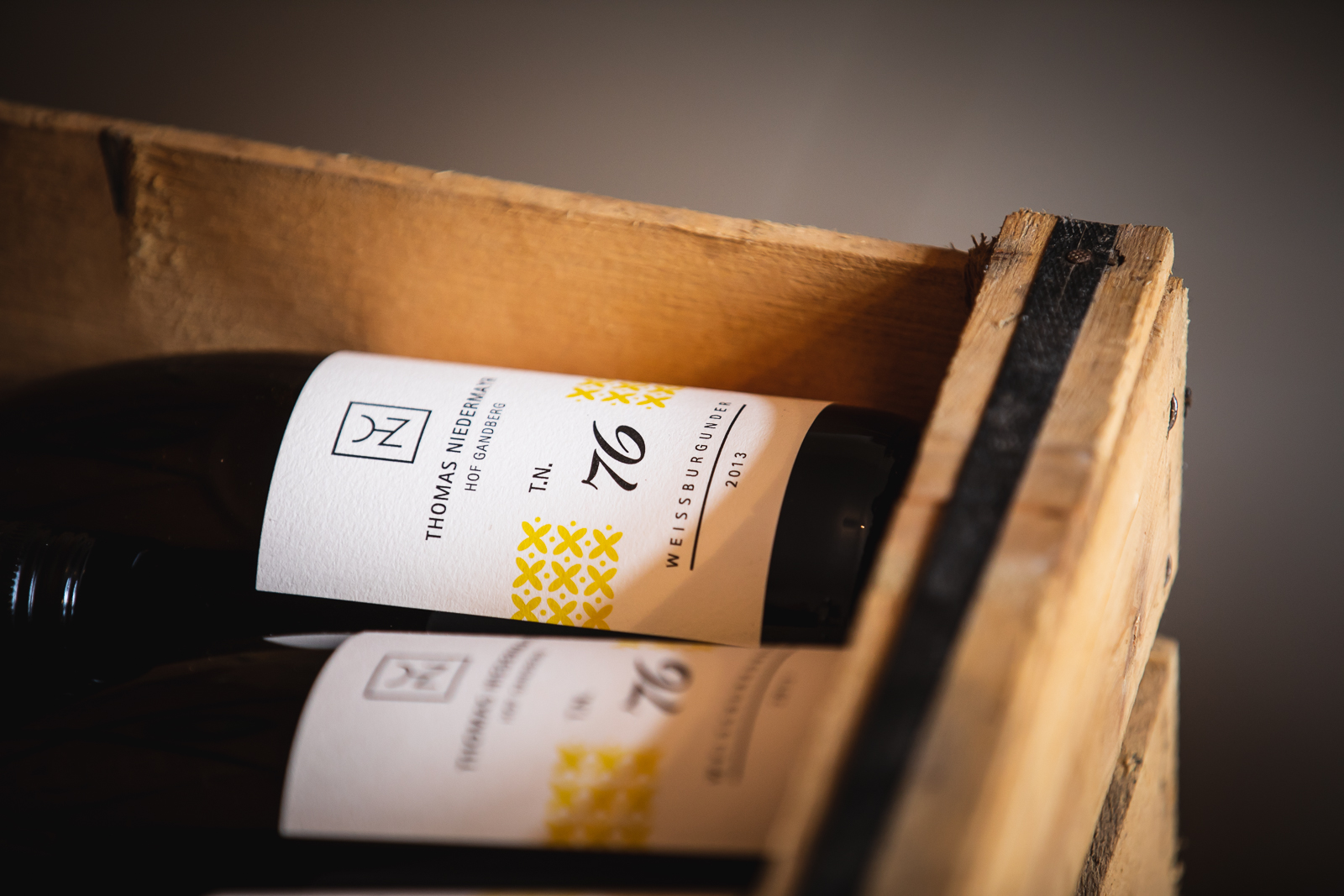
Could you take us through those striking bottle designs, and the numbering system?
TN: The bottle design was developed in 2013, when I took over. With the logo you can clearly see where the wine is from, the pattern reflects the characteristics of each wine in a modern and artistic way. The names are simple and with the single variety wines you will just find the name of the variety, minimalistic and precise. In 2018 we decided to leave the numbers off the bottles, which represented the year when the vines were planted, so the label can be even more elegant and simple.
There are some wonderful wineries in the Alto Adige region. Do you learn from and support one another?
TN: We do! It is a small community here in the region and we are always happy to exchange knowledge and information. With our way of making wines we are in a niche, and with the PIWI varieties in an even smaller one. But we are in a several organisations that help organise our support for each other. Take a look at freistil.bio!
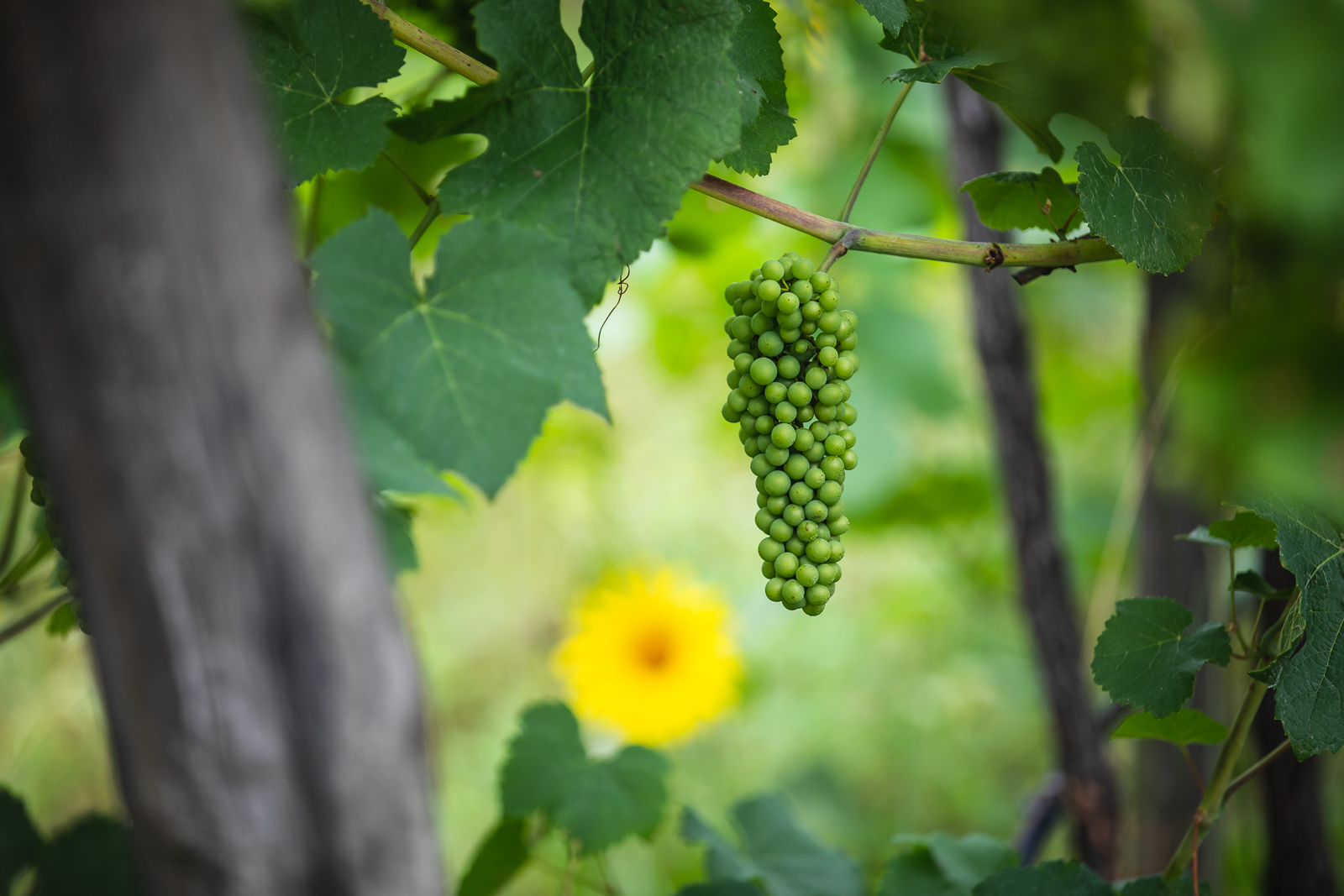
Who else excites you? Who’s doing special things in wine / farming?
TN: I am fascinated by wineries that have a vivid and dynamic cycle. Winemakers who are creative, want to experiment and are open to learning and sharing. Essentially winemakers who have an open door, where you are invited to come in, where you can discuss just not about the good but also the bad experiences. People that not only show you the shiny exterior but what is behind that.
Last year I visited Sepp Muster and Andreas Tscheppe from South Styria in Austria, two winemakers I was particularly impressed by. And in the spring of 2019 we visited Klinec whilst in Slovenia, where the natural wines have a long tradition and there is a great diversity of animals at the farm. They are really still farmers where wine is not just business but the farm is looked at as a holistic cycle.
"I am fascinated by wineries that have a vivid and dynamic cycle. Winemakers who are creative, want to experiment and are open to learning and sharing." Thomas Niedermayr
That’s my next few winery visits sorted! Before we wrap this up, do you have any top tips for someone that’s interested in getting into wine-making?
TN: Set the ground with education. In Germany, Austria and Italy you can do an apprenticeship, and you can even go to University to study it. Educate yourself on soil, a lot! Understanding that what happens in the vineyard is the most important part. But also, that it takes practise and you have to work for others to understand the different ways of making wine. Doing a lot of internships is really beneficial and you will learn a huge amount. Drink wine! Find out what excites you and what you want to create. Be able to accept failure when the wine doesn’t turn out great. And remember : it takes time!
And finally, is there a way that we can support you from afar during this strange time? I’ll take a box of Solaris if you’ve got any going spare!
You can definetly hit us up anytime on Instagram, Facebook or via info@thomas-niedermayr.com. We are happy to share some bottles!
Thank you, both. This has been fascinating, and has brought back great memories of our visit. I hope we’ll be able to come and see you again soon. All the best!
Rudolf Niedermayr | Artwork by Damon Chenh | Order this print online here
——————————
For more info on Thomas Niedermayr wines, head to their website: www.thomas-niedermayr.com
This is the third in a new series of interviews across the drinks industry – keep track of them in The People section, or sign up to the Matt The Latest newsletter at the bottom of this page. If you want to catch up, you can find the first interview with Pier Paolo Antolini of Antolini Vini here and the second with Martin Gojer and Marion Untersulzner of Weingut Pranzegg here.
Thanks once again to Nell Hugh-Jones at Nell’s Originals and Damon Chenh at Chenh Art for creating bespoke artworks for this article. You can find these works and others in the series on sale alongside my prints on Matt The Prints:
MTL x Nell’s Originals // MTL x Chenh Art
Check them out and support independent artists by purchasing the prints!
Matt The Tips: If you find yourself driving around Trentino and Alto Adige-Südtirol regions in search of more wineries, check out these outstanding producers.
In Der Eben – indereben.de
Foradori – agricolaforadori.com
Pranzegg – pranzegg.com
Garlider – garlider.it
————————
Scroll down for more photos from our visit to Thomas Niedermayr Hof Gandberg
